FROM MYTH TO EARTH
2014 - 2015, COLOMBIA
In 2014 Sol Bailey Barker travelled to Colombia to spend six months exploring its landscapes and researching and responding to its histories, mythologies and contemporary state. Travelling across the vast landscapes of the country, walking the land; Sol created 15 sculptures, which reflected his historical research whilst engaging with the physical and ephemeral nature of place. These sculptural gestures were created using: axe, chisels and fire and metal. The sculptures were photographed and then left in situ, serving as monuments to particular events and myths some of, which are fleeting moments amongst a long history of upheaval.
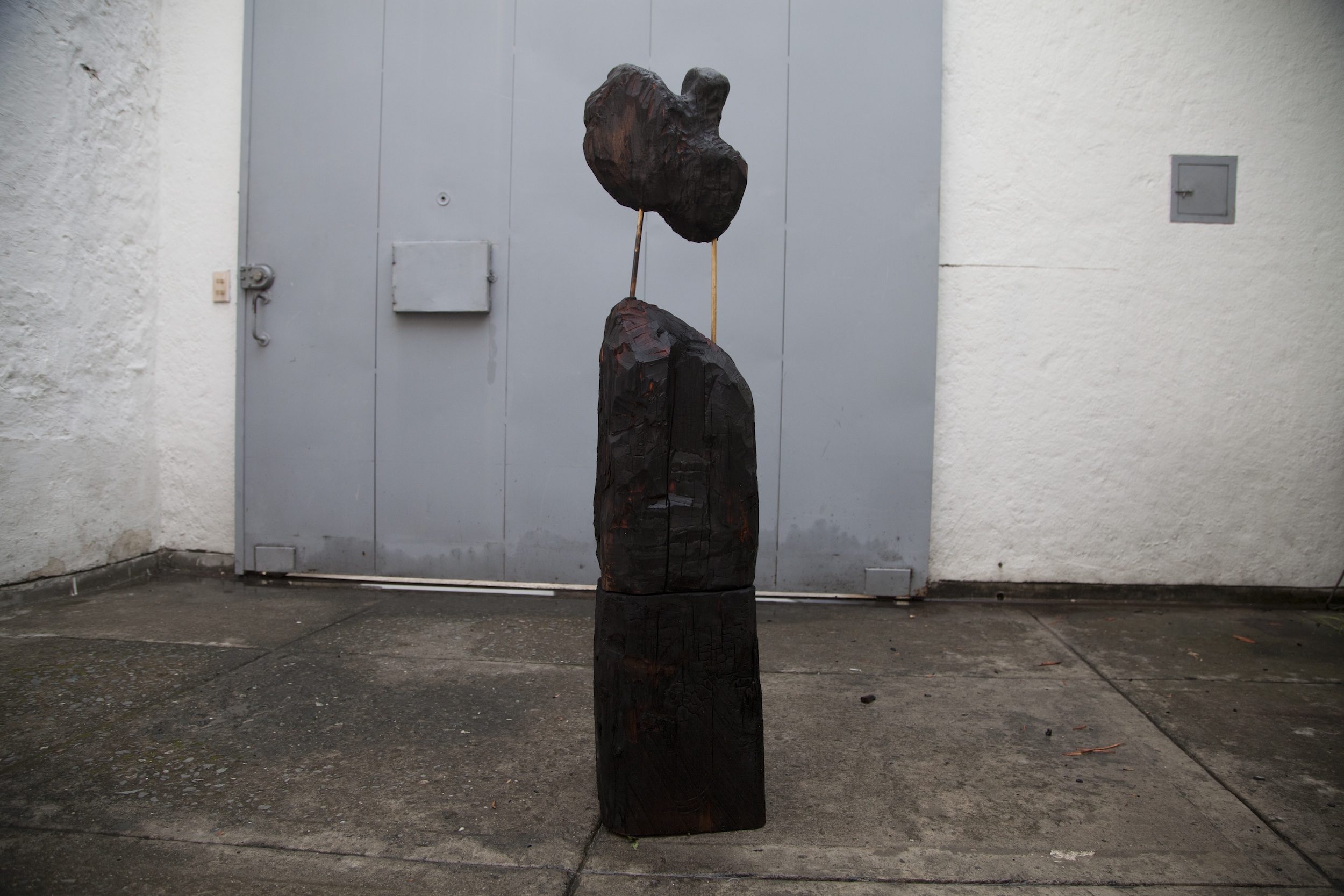
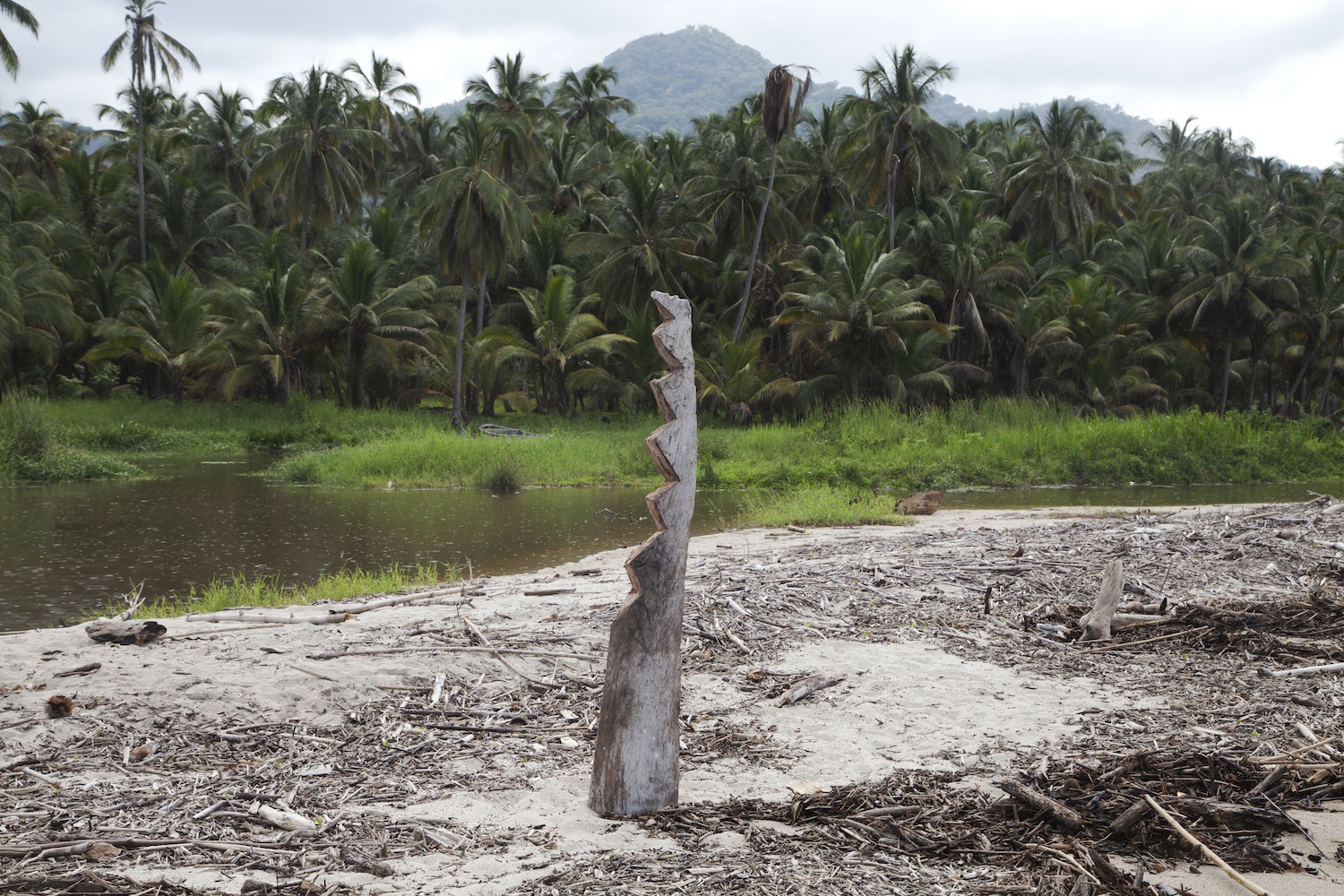
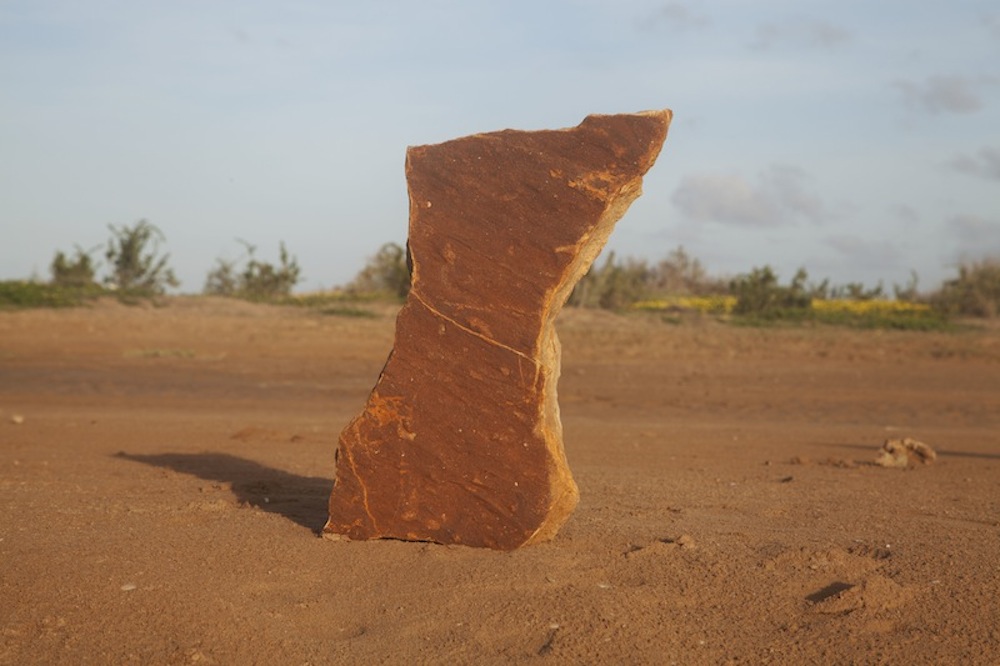
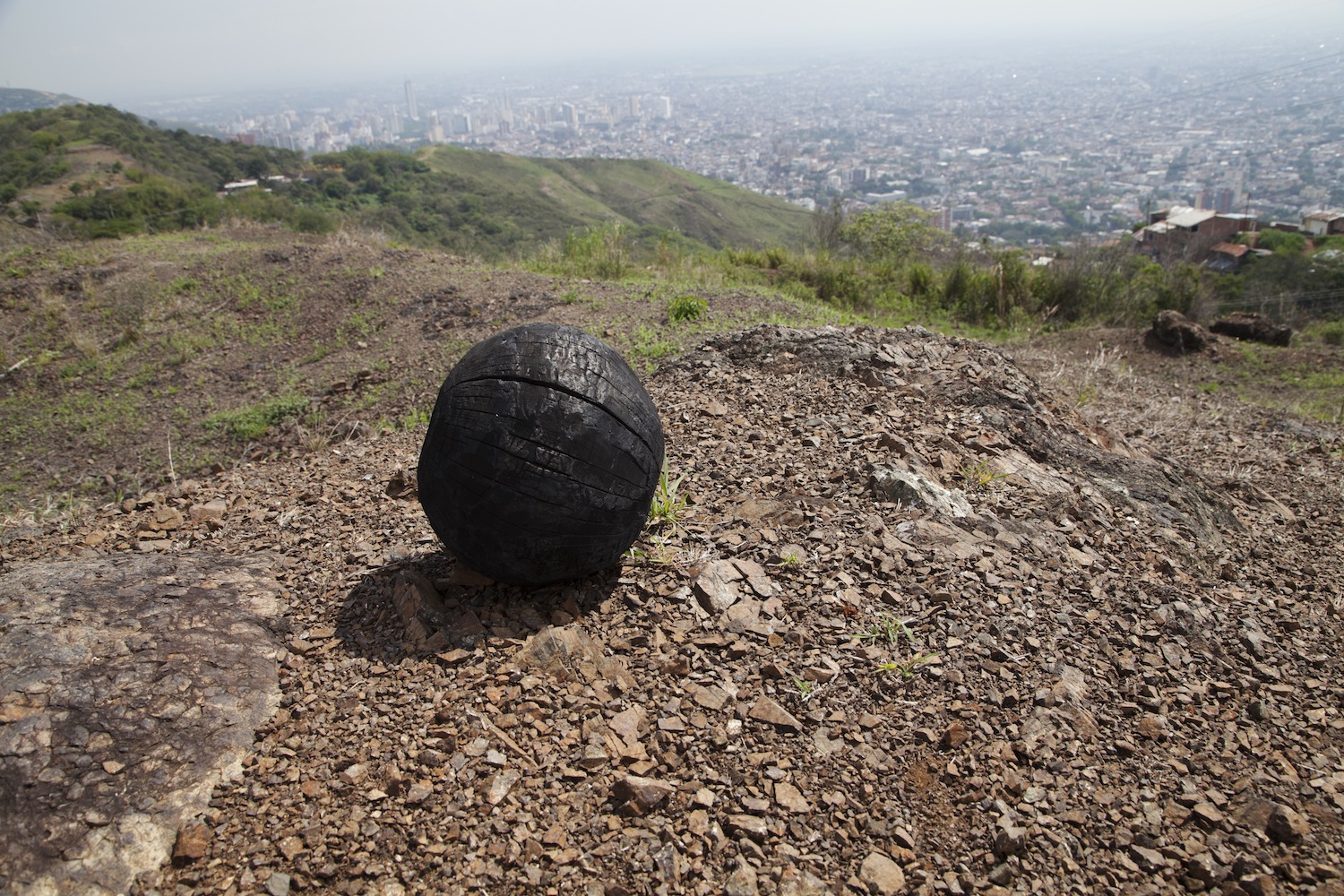
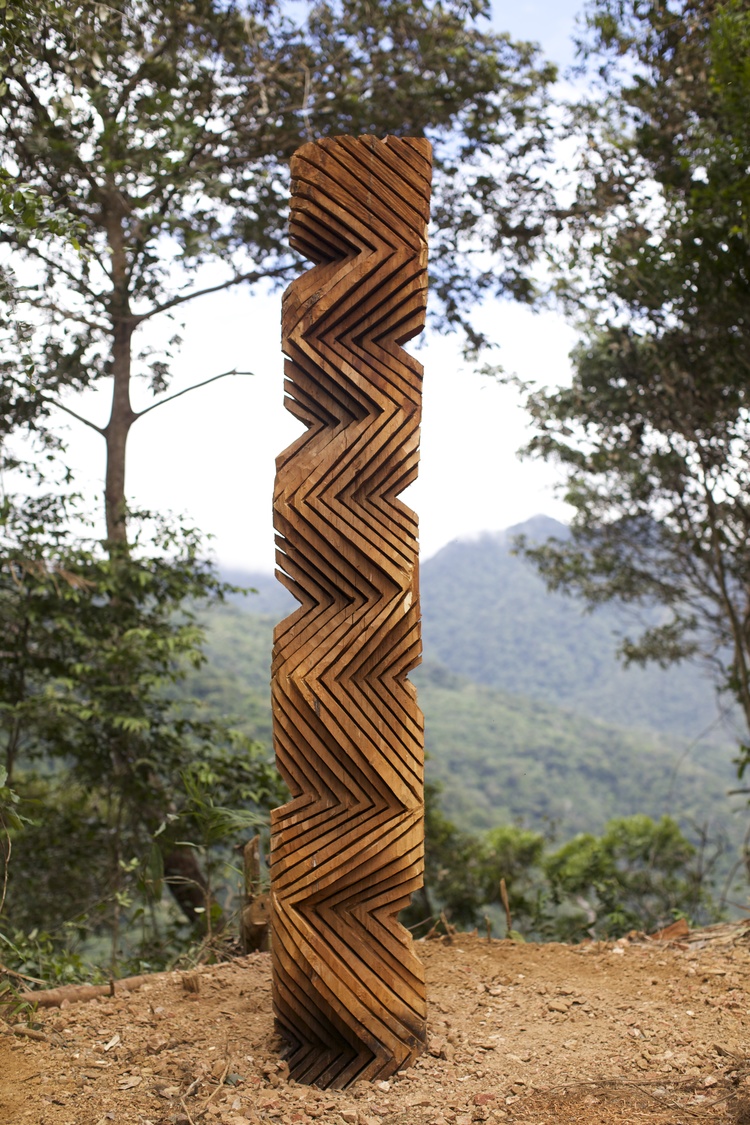
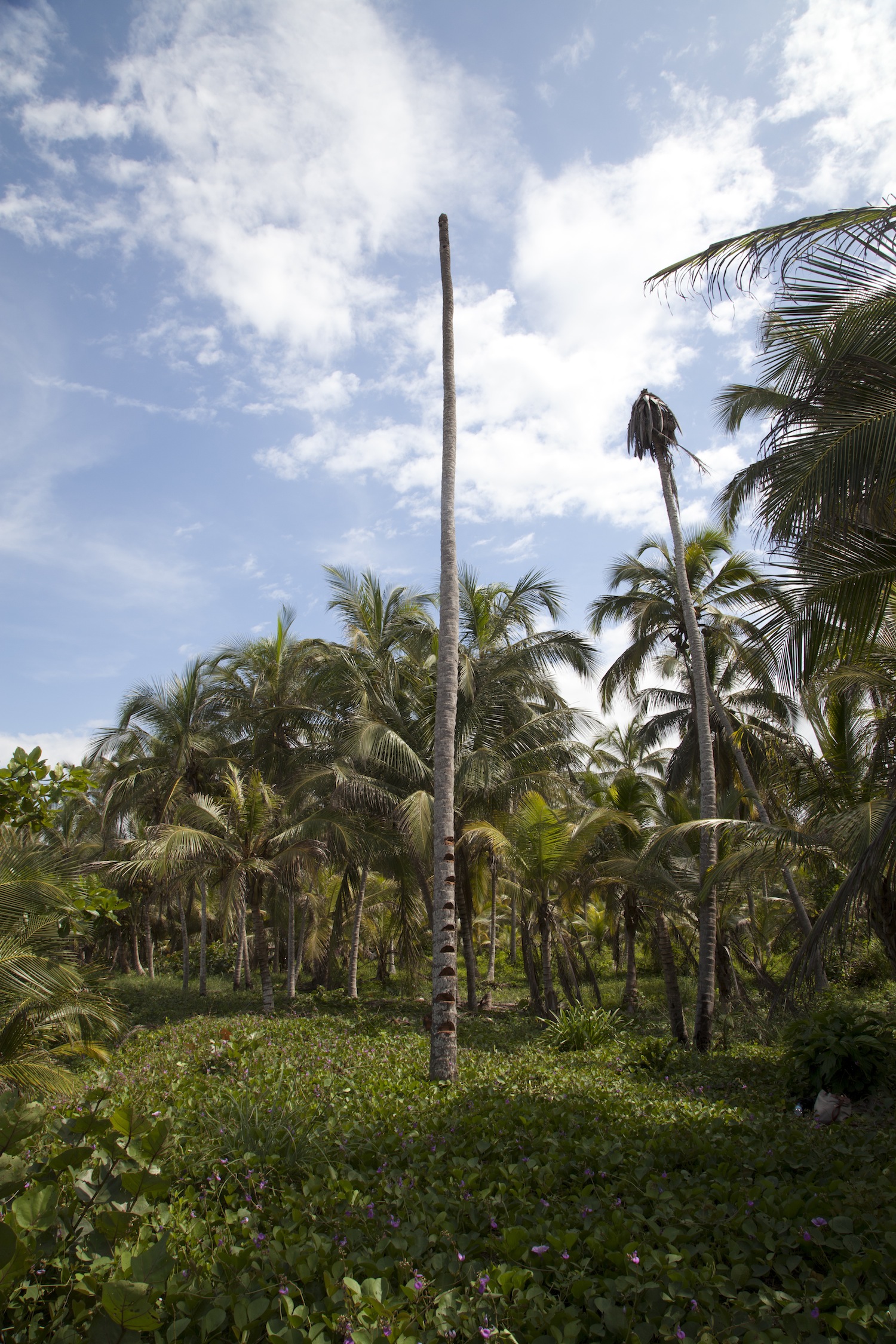
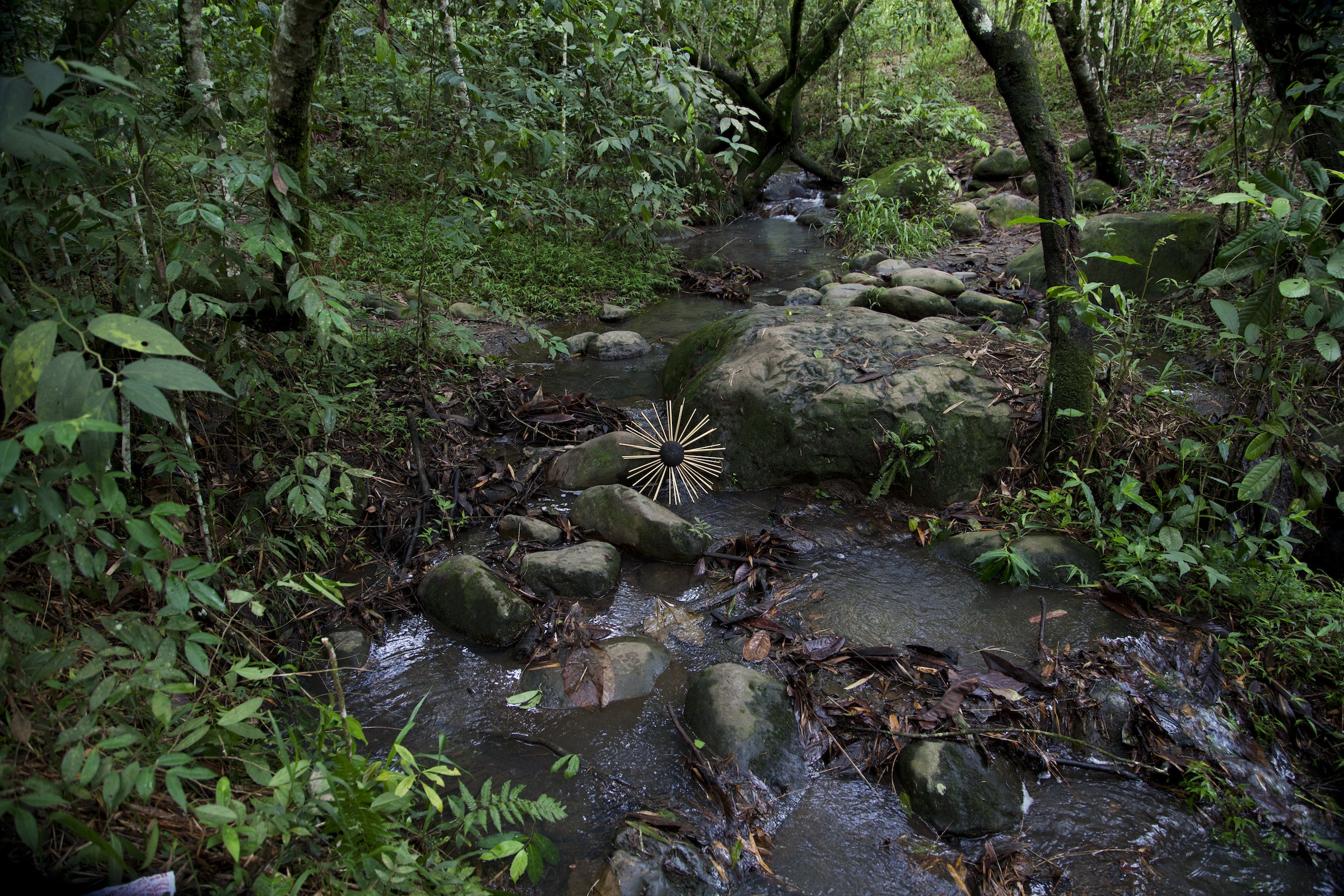
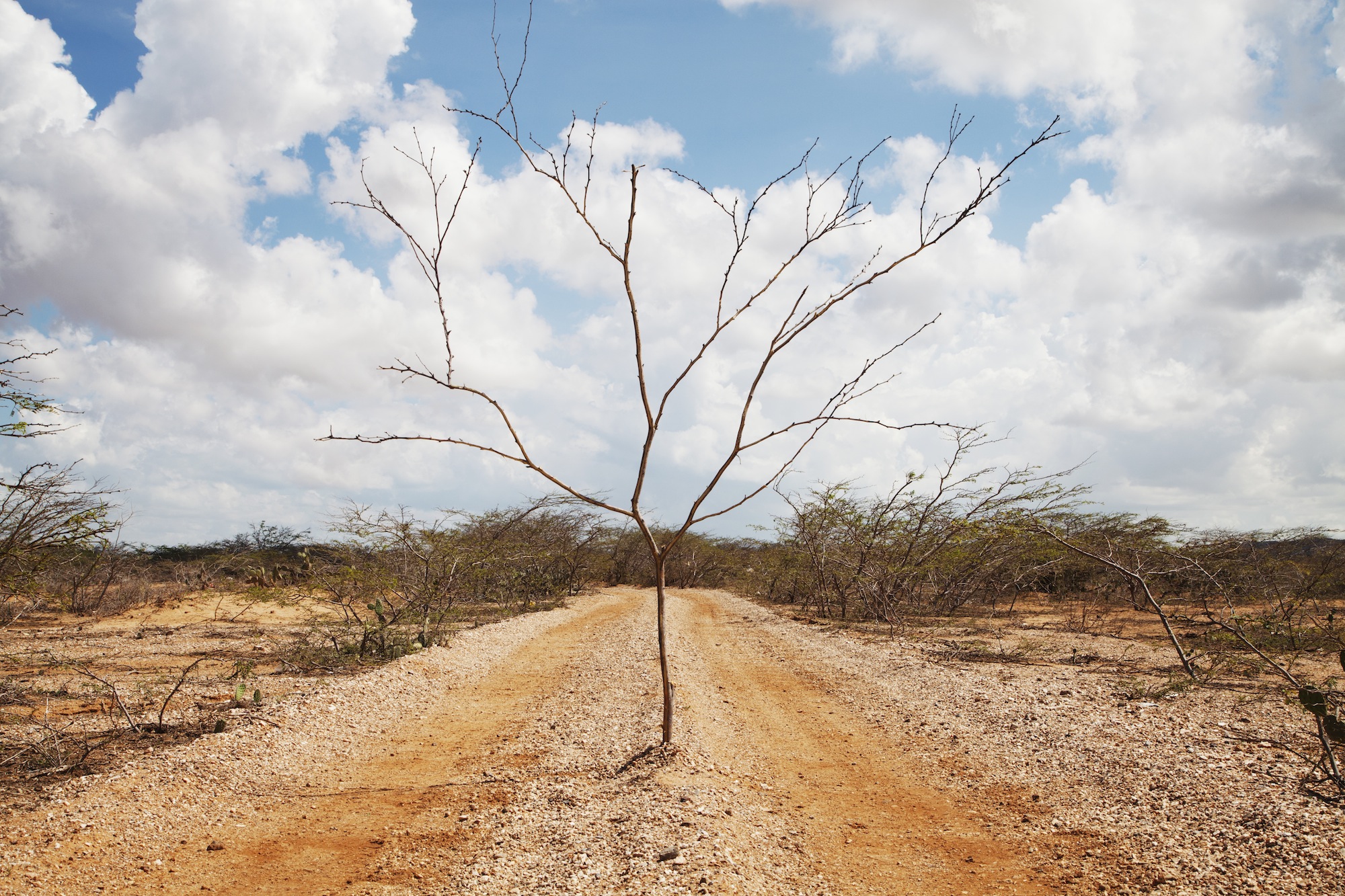
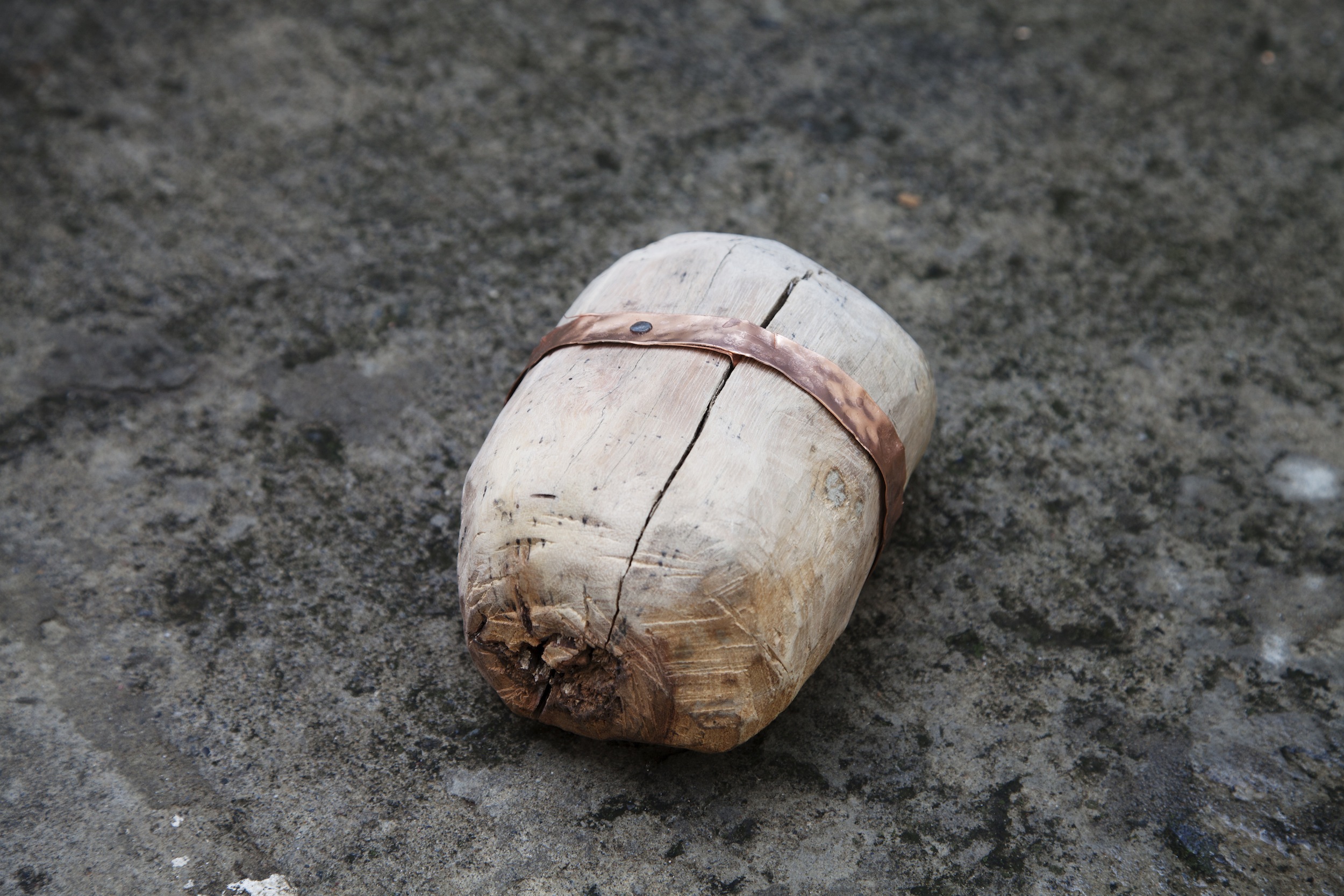
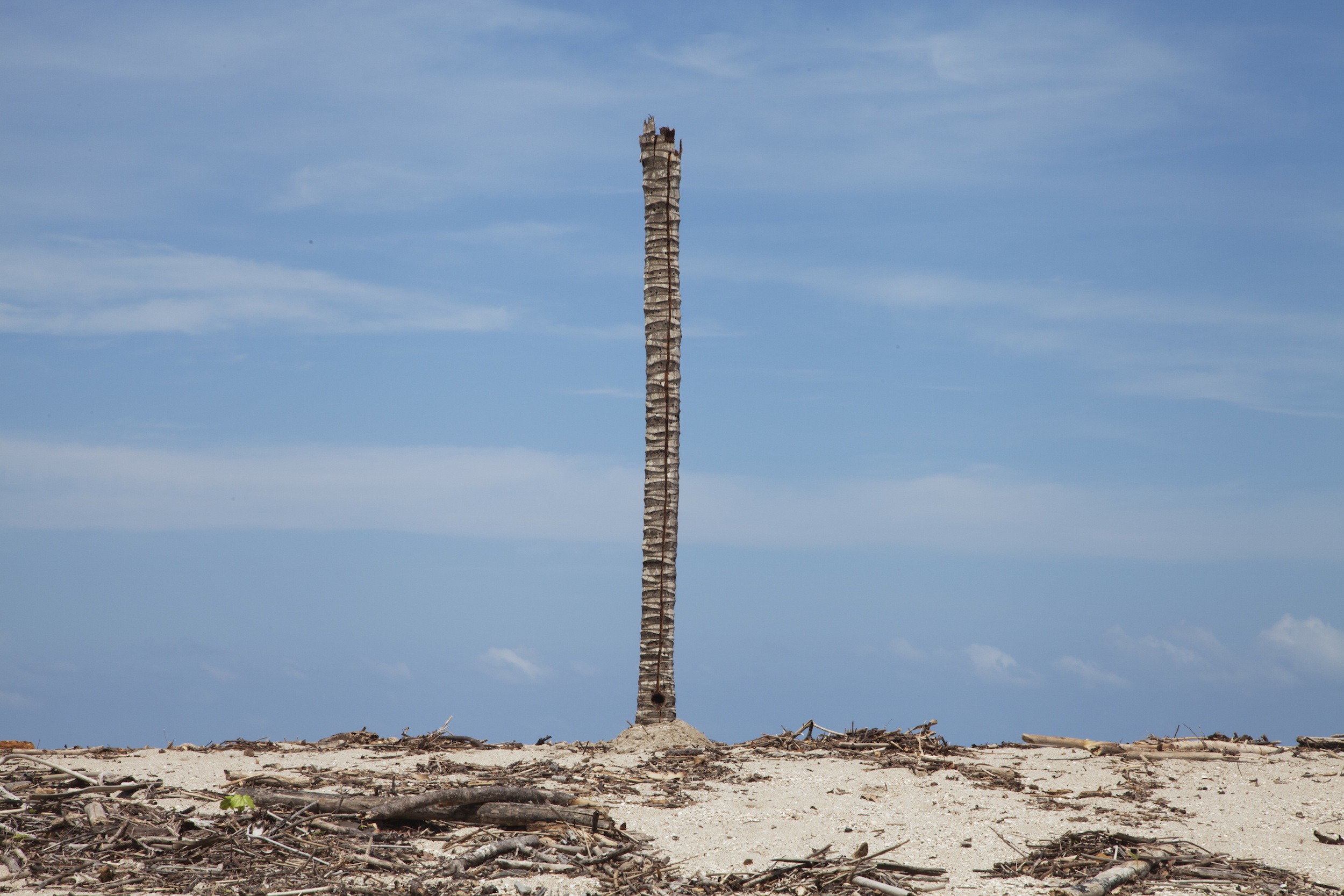
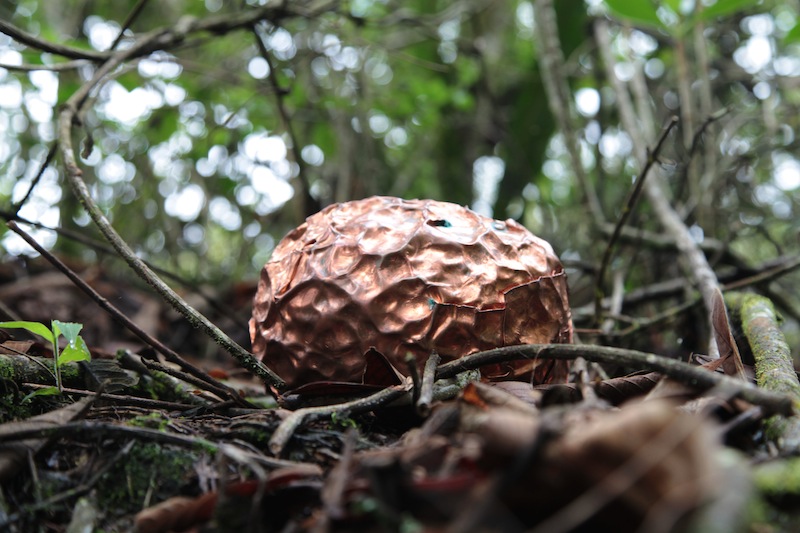
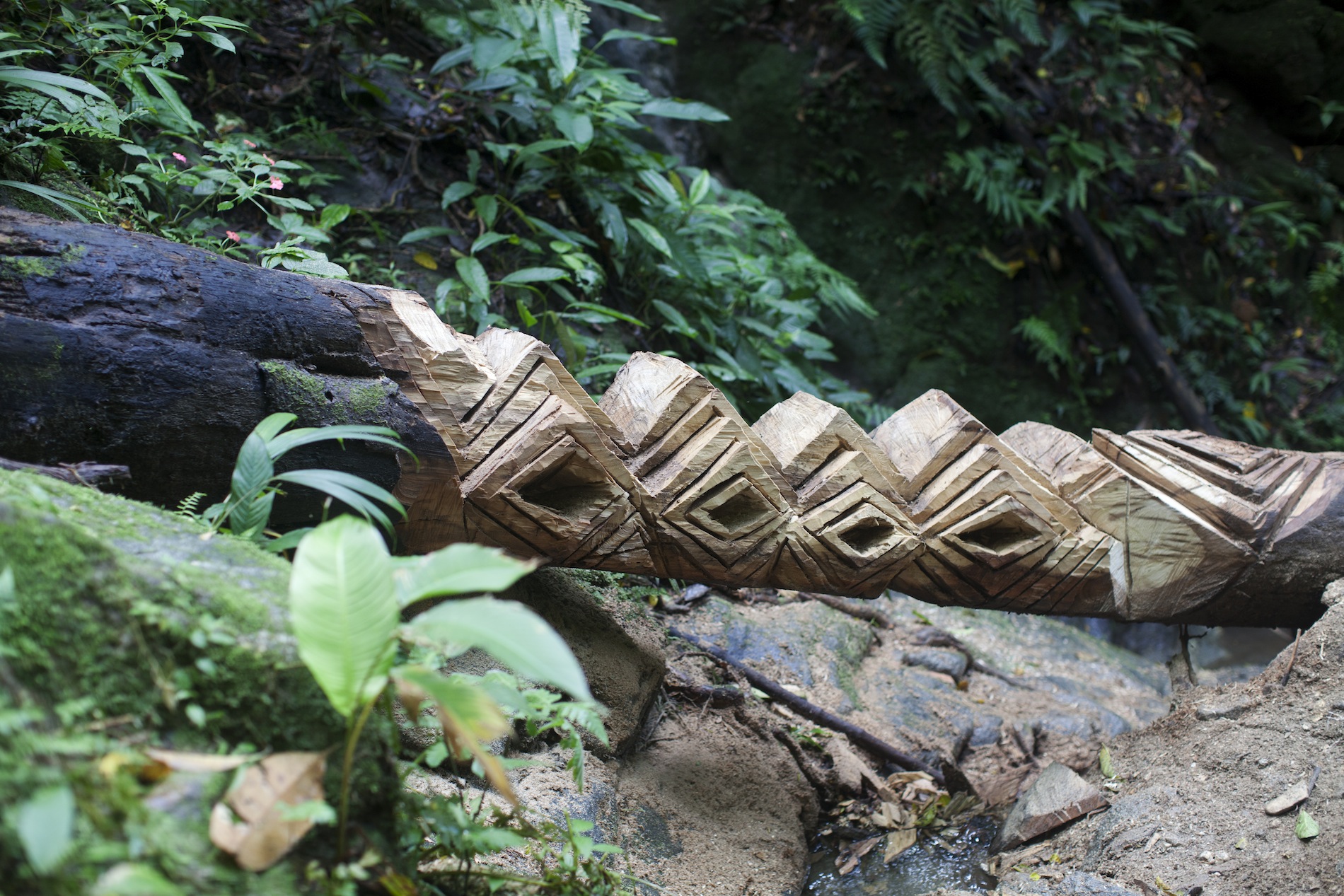
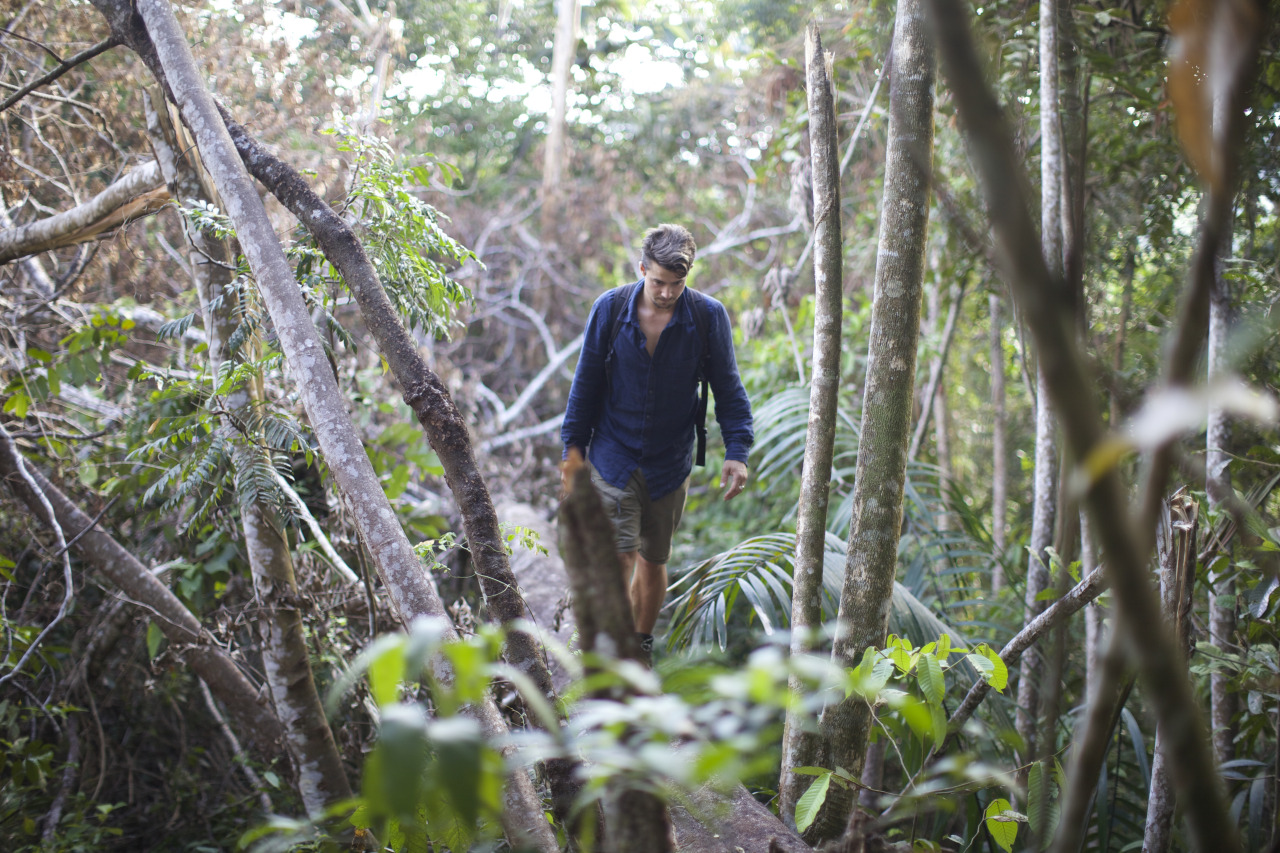
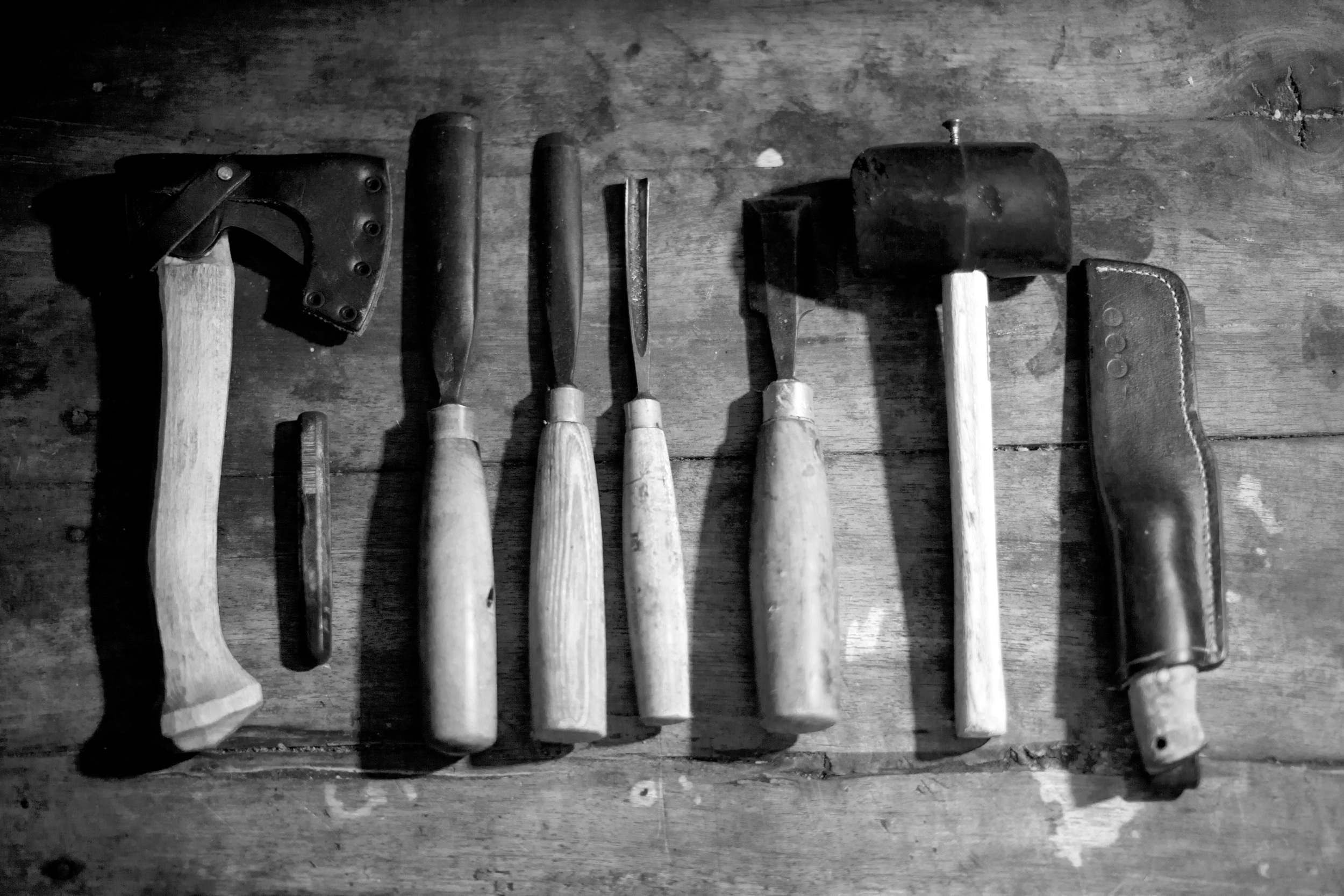
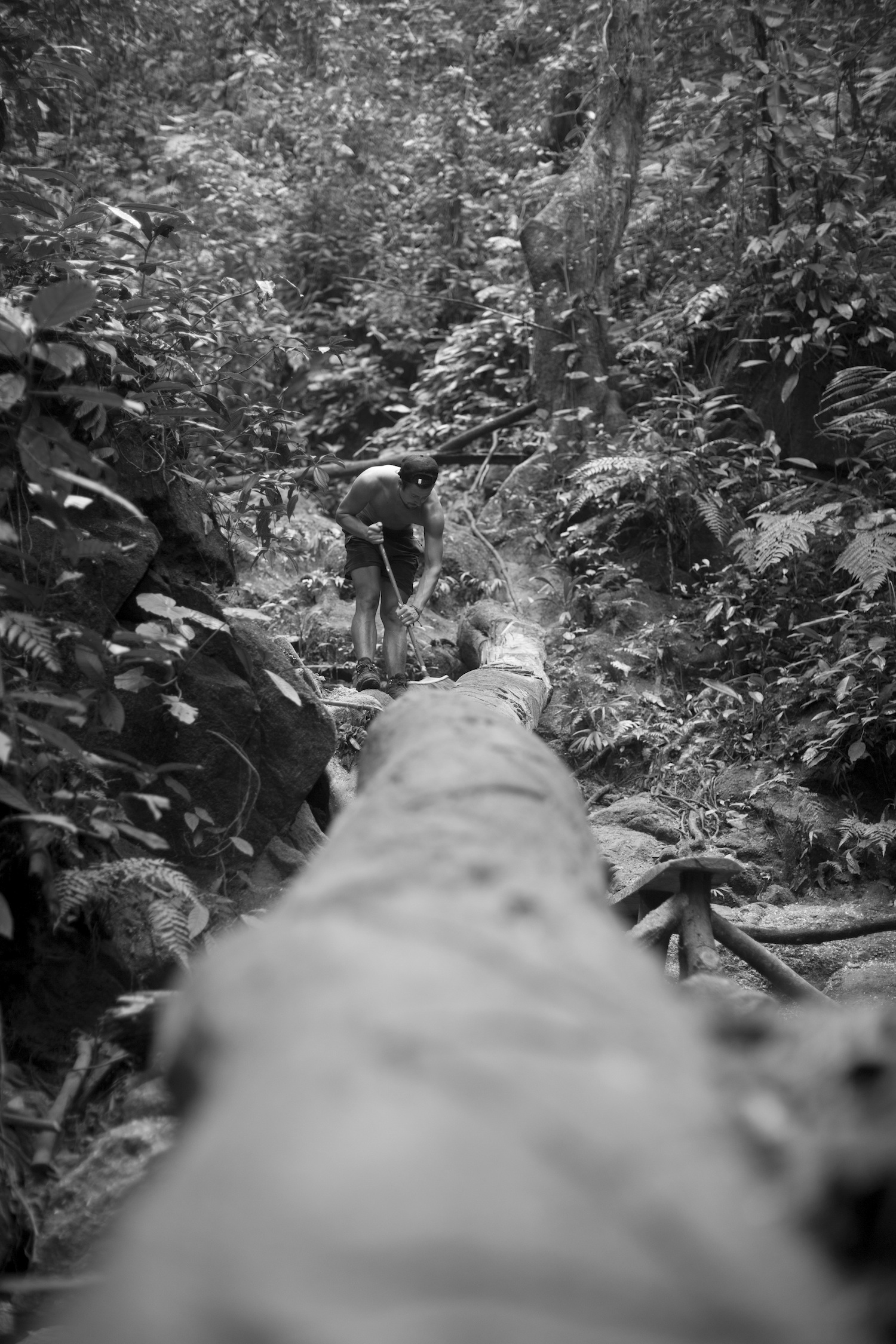
Copper Bound Heartwood
"In the Muisca civilisation, which stretched from Cali to beyond Medellin, a spherical metal container was said to represent: first the community, then the world and finally the universe. Made from the heart of a tree collected from Cali city centre (a city with one of the most violent pasts in contemporary history) the tree will have born witness to terrible events, many of which resulted from the drug war between the Cali and Medellin cartels. Taking the heartwood from this tree, I folded and beat copper to wrap and contain it. I travelled with this offering from Cali to the outskirts of Medellin and placed it in the forest of Parque Arvi."
Time Measured in Stone
"La Guajira desert stretches across the northernmost point of South America. Here the nomadic Wayuu people dwell, moving between the borders of Venezuela and Colombia herding goats and living in houses made of dried cacti. They have lived here for centuries resisting the colonisers and defending their land. Cabo De La Vela is the place where the Wayuu believe their spirits travel to after life. Here the sand slants gently into the sea and one can walk out into the still waters of the bay. This place feels like both the edge and the end of the world. Simply made by hitting rock against rock to form a shape that represents infinity, Time Measured In Stone is a monument to the place where the desert meets the sea."
Monumento A La Selva
"'Monumento A La Selva' was carved from a fallen rubber tree, which I found whilst hiking at the top of the jungle mountain in the High Amazon. The tree, which fell in a storm had fallen at a point overlooking a deep valley of thick forest and waterfalls. I lived in a mud hut in the jungle for six weeks during, which time I woke early every morning, hiked an hour through uncut thick vegetation to build a monument to the landscape and it's people.
'Monumento A La Selva' reflects the form of the landscapes, it's contours and tributaries as well as the patternations and symbolism used by the indigenous peoples of the land. Carved from a fallen rubber tree it remembers the history of those enslaved to the rubber trade and the trees illegally deforested and stolen from the land"
